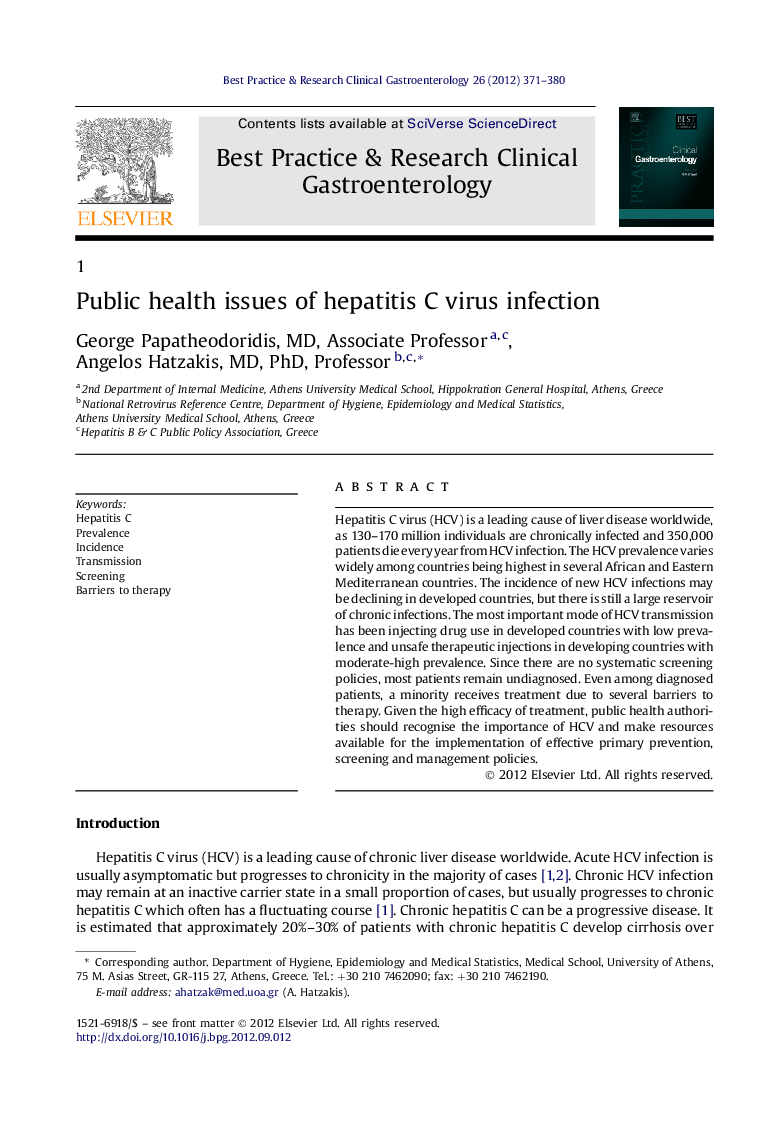| Article ID | Journal | Published Year | Pages | File Type |
|---|---|---|---|---|
| 3254190 | Best Practice & Research Clinical Gastroenterology | 2012 | 10 Pages |
Hepatitis C virus (HCV) is a leading cause of liver disease worldwide, as 130–170 million individuals are chronically infected and 350,000 patients die every year from HCV infection. The HCV prevalence varies widely among countries being highest in several African and Eastern Mediterranean countries. The incidence of new HCV infections may be declining in developed countries, but there is still a large reservoir of chronic infections. The most important mode of HCV transmission has been injecting drug use in developed countries with low prevalence and unsafe therapeutic injections in developing countries with moderate-high prevalence. Since there are no systematic screening policies, most patients remain undiagnosed. Even among diagnosed patients, a minority receives treatment due to several barriers to therapy. Given the high efficacy of treatment, public health authorities should recognise the importance of HCV and make resources available for the implementation of effective primary prevention, screening and management policies.
